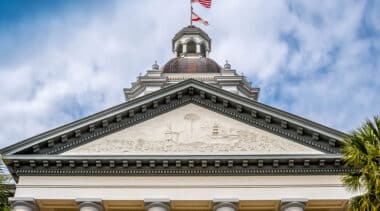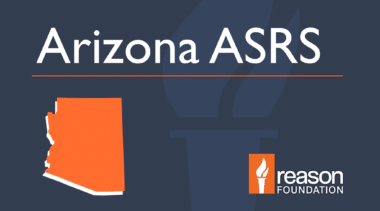Zachary Christensen is a managing director of Reason Foundation's Pension Integrity Project.
Christensen’s work with Reason's Pension Integrity Project aims to promote solvent, sustainable retirement systems that provide retirement security for government workers while reducing long-term costs for taxpayers and employees. Zachary and his team provide education, reform policy options, and actuarial analysis for policymakers and stakeholders to help them design practical and viable reform proposals.
The Pension Integrity Project has provided technical assistance to several successful pension reform efforts in recent years, including in Michigan, Colorado, Arizona, South Carolina, Texas, and other states tackling persistent pension solvency challenges.
Christensen has contributed to in-depth solvency analysis of the Arizona PSPRS, Arkansas TRS, Louisiana TRSL, Texas ERS, and Texas TRS pension plans.
Christensen's work has been published in the Los Angeles Daily News, Orange County Register, NJ.com, Colorado Politics, and many other publications. He has also been featured in the Carolina Journal and the Michigan Capitol Confidential. His research has been published by the Hoover Institution, The Platte Institute, Texas Public Policy Foundation, and Rio Grande Foundation.
Prior to joining Reason Foundation, Christensen was a pension finance analyst at Stanford University’s Hoover Institution, where he worked on widely-cited research on the funding status and accounting methods for public sector retirement systems.
Christensen holds an M.S. in Public Policy from Pepperdine University and a B.S. in Political Science from Brigham Young University.
-
Testimony: Recommendations for the FRS Investment Plan
Adjustments to Florida's public defined contribution retirement plan could better serve employees and taxpayers.
-
Pension Reform Newsletter: How strong investment returns impact public pension funding
Plus: New York lowers its investment return expectations, problems for Ohio's teacher plan, new pension reports from Pew and Equable, and more.
-
Three reasons why public pensions still need reform
Despite realizing excellent investment returns in 2021, public pension plans are still in need of reforms to prevent future debt and ensure they can pay out promised benefits.
-
Pension Reform Newsletter: Leveraging airports to improve pension solvency, the future of reform in Pennsylvania, and more
Plus: Solutions to Montana’s pension challenges, comparing U.S. and Canadian public pensions, and more.
-
Colorado’s pension debt may be worse than policymakers think
A change to PERA's mortality assumptions, which more accurately project the length of time current members will be drawing benefits from the plan, added $3.1 billion in liabilities.
-
Colorado’s Missed Pension Payment Could Cost Taxpayers Millions
One simple solution—especially with the state sitting on a massive surplus—would be a prompt make-up payment.
-
Pension Reform Newsletter: Inflation’s Impact on Pension Plans, High Investment Returns, and More
Plus: A possible 13th check for Texas teachers, how Florida can pay down pension debt, and more.
-
Pension Reform Newsletter: Landmark Reform in Texas, How Annuities Can Improve Retirement Offerings, and More
Plus: States that are leading the way on pension reform, new report on the value of retirement benefits and more.
-
Landmark Texas Pension Reform Law Tackles Funding Issues, Secures Employees’ Retirement Benefits
Senate Bill 321, the new Texas pension reform law, addresses persistent structural underfunding and will pay down over $14 billion in unfunded liabilities.
-
Pension Reform Newsletter: Texas Legislature Approves Pension Reform, Retirement Choice in South Carolina, and More
Plus: Colorado and Arizona consider extra debt payments and Michigan looks to expand public employees' ability to purchase annuities.
-
How State Pension Funding Ratios Have Declined Over Time
Twenty years ago, state pension plans were nearly 100 percent funded, on average. Today they are roughly 72 percent funded.
-
An Extra Pension Payment Could Generate Immediate Savings for Colorado And State Employees
A new report finds that making a $500 million payment to PERA this year could generate significant annual savings.
-
Analysis of South Carolina Senate Bill 176
Senate Bill 176 would provide new hires a secure and attractive retirement plan that better protects the state's taxpayers.
-
Analysis of Texas Senate Bill 321
Senate Bill 321 could save the state as much as $15 billion in long term costs and ensure that new employees' retirement benefits are fully funded.
-
Pension Reform Newsletter: Using Marijuana Revenue to Pay Pension Debt, Pension Reforms in Florida and North Dakota, and More
Plus, analysis on the factors that impact state-level pension reforms and how to better protect public workers from retirement risks.
-
Nebraska’s Growing Municipal Pension Funding Challenges
Omaha and Lincoln have made progress in addressing pension issues in recent years, but unfunded liabilities are likely to continue to grow and harm city finances.


















